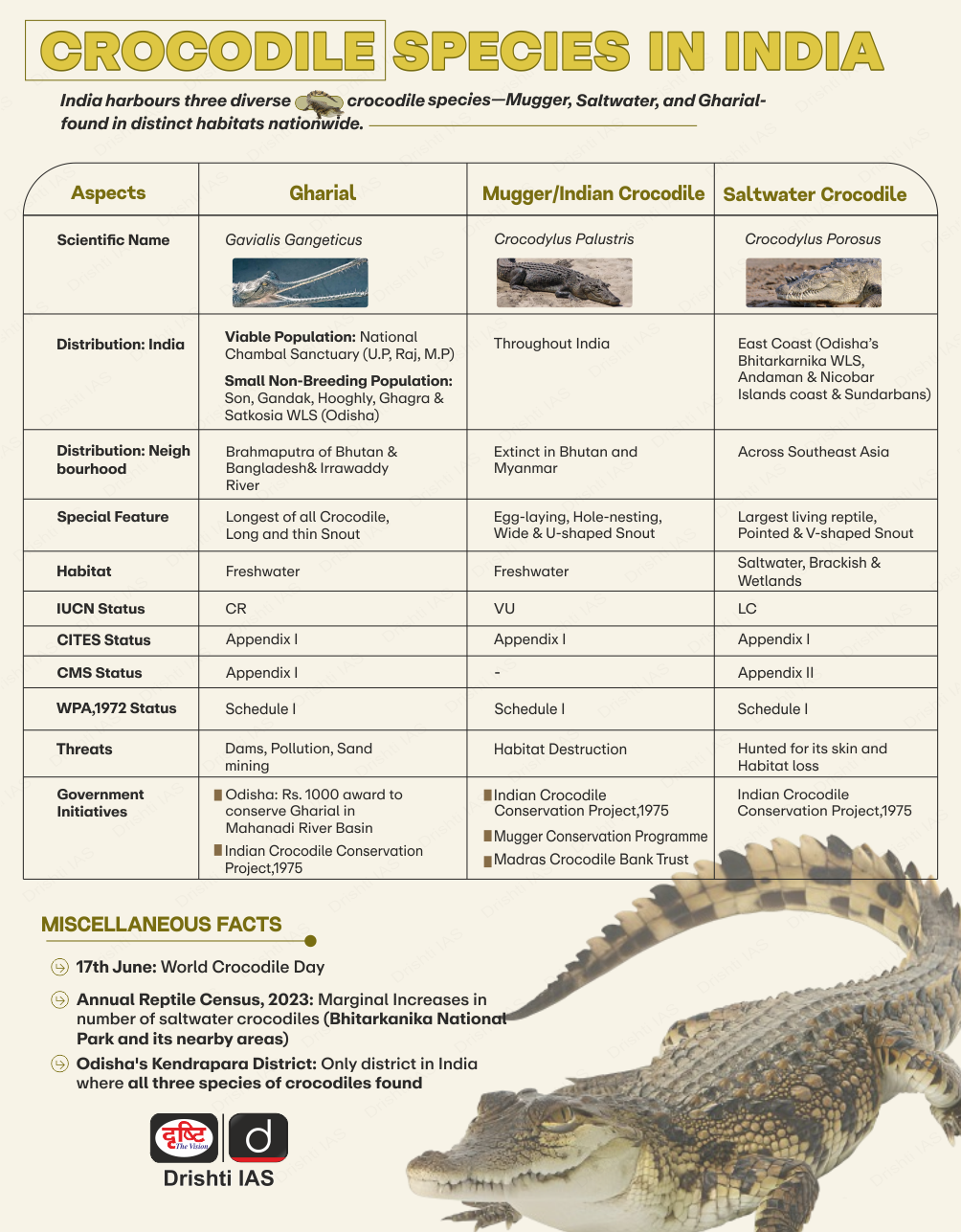IUCN's First Gharial Green Status Assessment | 10 Oct 2025
Why in News?
The International Union for Conservation of Nature (IUCN) has conducted its first-ever 'Green Status' assessment of the Gharial (Gavialis gangeticus).
- The species has been classified as "Critically Depleted" due to ongoing threats despite years of conservation efforts.
Key Findings
- Current Population and Habitat: The Chambal River (spanning 500 km across Uttar Pradesh, Madhya Pradesh, and Rajasthan) remains the last stronghold of the gharial, housing several thousand individuals.
- The Chambal Sanctuary (established in 1979) is the only site with a viable gharial breeding population in the wild. This sanctuary also protects other endangered species like the Ganges River dolphin and the red-crowned roof turtle.
- Other populations exist only in small, isolated pockets across northern India and Nepal.
- The World Wide Fund for Nature (WWF) India report reveals that only 0.5% of young gharials survive to adulthood, underscoring the critical need for protection of nesting habitats to aid in their recovery.
- Historical Range and Decline: Once abundant across major river systems such as the Ganga, Brahmaputra, Mahanadi, Indus, and Irrawaddy, gharials faced rapid habitat destruction due to Large-scale sand mining, hunting for skins, Egg collection, Construction of dams and barrages.
- By the 1970s, the species had disappeared from nearly 98% of its historic range.
- The current estimate is around 681 adult gharials remaining in the wild, with 80% residing in the Chambal River.
- IUCN 'Green Status' vs. Red List: The IUCN Green Status differs from the traditional Red List by assessing progress toward full ecological recovery rather than just extinction risk.

